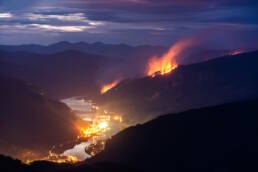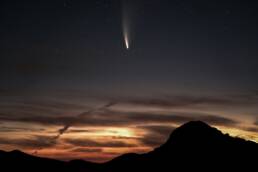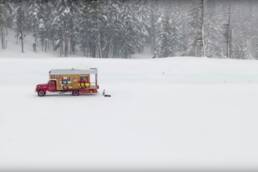Last year we interviewed British Columbia forest-fire ecologist Robert Gray for a story in CMC magazine. This year, former CBC journalist Jeff Davies revisits the expert to ask some tough questions about the future of forest fires in the province. And he receives some scary answers.
One of BC’s leading wildfire ecologists says British Columbians can expect fire in the woods and smoke in the air for decades to come. “This is what the future looks like, and, if anything, it’s going to be worse than this,” says Robert W. Gray of Chilliwack. “So if anyone hasn’t gotten the message yet, they’d better get it now.”
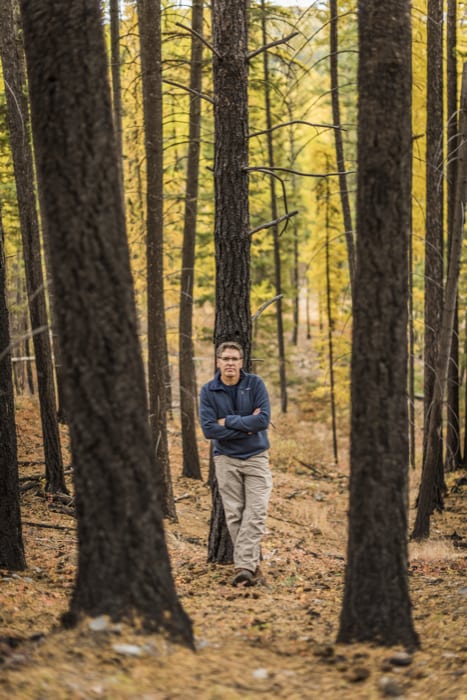
Gray, who was profiled in a story in Coast Mountain Culture magazine last year, spoke to senior writer Jeff Davies last week, just as the province of BC enters another fire season. It follows two record years in which wildfires burned thousands of hectares of forest and bush and destroyed hundreds of homes. He says he agrees with estimates that the area burned by wildfire across Canada may double or quadruple in the coming decades. Part of the solution is to use prescribed burns to get rid of needles and other fuel on the forest floor, while also finding new ways to use waste wood and logging slash to make building materials or bio-energy. Below is an edited version of the interview.
JD: Another fire season is already underway in BC. There are fires burning in various places in the province, we’re experiencing record heat, and there are extreme fire conditions in some areas. Can you give me some idea just how bad it is out there? How does it compare to the last two record breaking years?
RG: Well, you’ve got the compounding effect of drought now, so of course the longer the drought goes on, the deeper it gets. So we started out 2016 with drying out, then 2017, 2018. So here we are, kind of three years into a drought, and we didn’t get a lot of snowpack in the province, and then what we did get had a pretty low moisture content to the snow. So it was actually dry snow. And then it’s gone, and it’s just warm temperatures and warm winds. The other thing is, because our nighttime recovery is so poor, we’re not getting cool temperatures and the high humidity at night. So basically that period of evaporation is going on longer on a diurnal basis. So if you imagine 20 to 30 years ago, you would get some high temperatures during the day, but it would really cool off at night, and it slowed down that evaporation and evapo-transpiration process. Well, now temperatures are staying higher at night. So we have a longer period of diurnal drying going on with the drought. And we just have a lot of available fuel right now, and it’s available about a month before it usually is.

What do you make of the fact the fire season seems to be starting earlier?
It’s not unusual to get wildfires in May. They’re usually human caused, with the late April drying trend that goes on, and then later in May we can start to get into June monsoon rains. But the last couple of years we just haven’t gotten the monsoons. They’ve been pushed up to the north of us or they just haven’t materialized at all. So we’re getting fire activity earlier, and it’s extended our fire season by about a month.
How concerned should be we be as British Colombians, especially those who live in rural areas or those who camp and recreate outdoors?
Well, if you haven’t gotten concerned for the last two years, then you’d better buckle up, because this is what is likely going to be happening on a regular basis. And it’s happening sooner, where we’re going to get, out of every 10 years, we’re going to get the odd blip year where we don’t get these kind of conditions or they’re modified. But this is what the future looks like, and, if anything, it’s going to be worse than this. So if anyone hasn’t gotten the message yet they’d better get it now.

I do see some commentary on social media getting a bit ugly, people turning on each other. I see people saying, well, if you folks in the city didn’t come back here in the woods and throw butts around and start campfires, we wouldn’t have all these problems. So what do you think of that?
Yeah, (laughter) everyone has a hand in this, you know, because of the climate change part of this. We all contributed to it. I mean, that was carbon that was released, emitted, 40-50 years ago; it’s just got there now. But it’s global. It’s not just the urban centres of BC, like Vancouver and Victoria, versus the rural parts of the province. We all have a hand in this and the solution is going to require all of us, we all have to make sacrifices, we all have to change our habits. We have to be more diligent with fire and not start fires. We have to change a lot of our habits, and our society is going to change if it’s going to be successful in actually getting a handle on this problem.
You talk about making sacrifices. What sorts of sacrifices?
Some of the things that we’re going to have to do involve how we deal with economics. There’s a group of us (wildfire ecologists) who are offering a paper and we’re challenging this idea that we can solve this problem through market capitalism.
On these social media forums I see people saying things like, “Gee, if only we freed up the forest companies, the big tenure holders, got rid of all the red tape, the environmental regulations, let them log their way out of this, we would be out of this crisis.” I know that’s not your viewpoint. But what would you say to that?

Well, that’s actually part of this discussion around market capitalism, because if we had this unfettered legislative landscape, and we just let the companies do what they want, we would be in no different a situation that we are right now. This has been driven by agricultural forestry, as far as the fuel side of this thing. We are not logging where we need to log. We’re not logging the material that we should be logging. So we talk about making sacrifices, then we’re talking about having to subsidize treatment. A colleague of mine actually talked about, we should just give it away, you know, all that material that doesn’t currently fit our economic model, which is dimensioned lumber. That’s what’s contributing to the problem, we have so much stored energy out there in material that our timber industry can’t use or doesn’t want to use. So part of the issue with the economics perspective is we need to be using more of that material and taking the heat out of the woods. And that means probably incentivizing the use of more of that material in energy markets and in building material. So, much less of a focus on fossil fuels derived building materials like cement and vinyl and steel, and more building material made out of wood. And you’re talking about really sticking your hand to the market.
What, if any, market is there for a lot of what I see out there that seems to be fuelling fires or threatening fires? And that’s not merchantable timber; that may not even be standing timber. It’s dead wood, blowdown, branches, needles, duff, bits of bark and leaf in the forest. It’s a huge issue in the Kootenays where I have property. What can you do with that stuff?
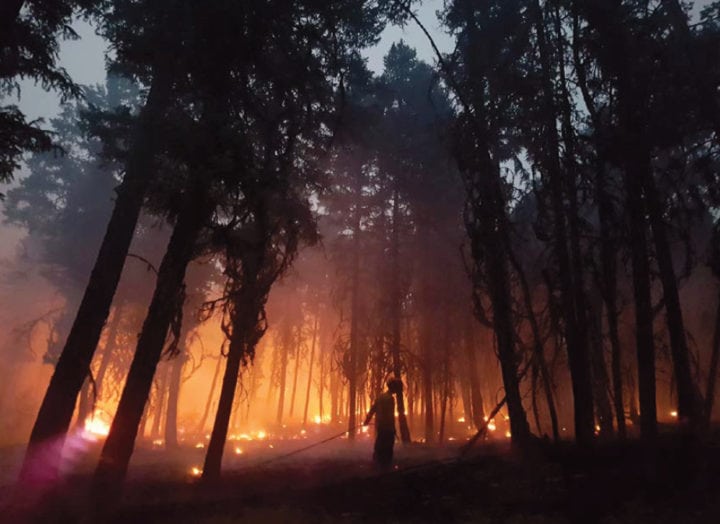
So there’s so much stuff that we just we know, there’s not much we can do with it. So the stuff that we can actually pull out of the woods, that currently don’t have a lot of value, those things would shift in two different directions. One of them is, is a lot of this engineered wood product, which is where we take low value materials, grind it up, and we make really, really good building products that have a stronger, more uniform in dimension than saw timber. And then the other stream is that stuff that goes into bio energy. So any, anytime that we can replace fossil fuels, we’re getting ahead, even though, pound for pound, if we do combust bio-energy we’re releasing co2, but we’re displacing fossil fuels co2. So the rest of that material, the bark, the fine branches, the needles, we have to burn it, we have to be doing a lot of prescribed burning, but what we should be burning is the fine fuels and not trying to burn up large fuels through slash burning. Because that’s where our emissions are, that’s where our fire effects are, our negative fire effects. Those are more expensive burns. There, there. We have safety issues, control issues. So we have to pull as much material out of the woods as we possibly can. And then we carry out our light prescribed burns, which are done in a day, a day at most. And then we plant them, and then that forest is actually asbestos for a while. Anything outside of that we’re just exacerbating the problem.
So you’re saying there is a use for slash without simply burning it?
Exactly. We had a period of bad slash fires in the 1930s and 40s, and out of that came slash burning for hazard abatement. And they had what was called young yarding at that time, which was yarding unmerchantable material. And so the companies, especially on the coast, they actually sent rigging crews back out to pull all the slash back up to the landing and then they would do something with it. This isn’t new. I mean, we actually got away from slash abatement in the 1980s and never looked back.
This is what the future looks like, and, if anything, it’s going to be worse than this. So if anyone hasn’t gotten the message yet they’d better get it now.
One other thing I hear in the social media commentary is, if only we had a fleet of those Martin Mars water bombers and doused all those fires as soon as they break out. Again, what do you say to that?
We have far better technology today. The Martin Mars, logistically, it’s not very efficient. It can only operate from two water sources in the province. Unlike other amphibious aircraft, it can’t land on land, so it can’t refuel on land. It can only go back to a base where a fuel supply is, or you have to truck a fuel supply to where it’s operating. There’s more efficient aircraft out there. The other thing is even these large air tankers like the 747 which drop, I think it’s 30,000 gallons. They cost a quarter million dollars a trip and it’s best used in fine fuel. So if you’re in chaparral or grassland it’s great. But even if you use retardant you still have to put boots on the ground. It only slows the fire. It doesn’t stop the fire. So these massive heavy load air tankers, they’re only used to buy us time and they’re really only good in certain fuel types. Our heavy fuel. They buy you a short period of time and then you still have to put boots on the ground so you’re better off with more pinpoint accuracy and more efficient use with the smaller air tractors and medium lift helicopters. They can operate anywhere. They can land on land to refuel their more pinpoint efficiencies are they’re more cost effective? The Martin Mars is outdated technology.
Finally I know you often see there are no ”no smoke” options we deal with the fire crisis and look to the future. As you look ahead what do you see? What awaits us down the road?
Well, they actually interviewed (University of Alberta professor of wildland fire) Mike Flannigan about a week ago on CBC and he basically said that, in Canada, we typically see about two and a half million acres burn a year. And he said before long, and I agree, looking at the models that were going to double if not quadruple that in the next couple decades. So we’re going to be putting a lot of smoke in the air. We have a lot of landscape that contains a lot of biomass. Now at some point we’re going to be reburning areas that have less fuel and will have less smoke, but we’re going to front end the smoke for a couple of decades.
Related Stories
Forest-Fire Ecologist Robert Gray – Is It Finally Time We Heed His Advice?
From prescribed burns to predicting future flames, forest-fire ecologist Robert Gray knows more than most. So why is…
Great Balls Of Fire: A Look At Famous BC Meteorites
Unsure if that blazing night light was a UFO? Maybe it was one of these extraordinary meteors that has entered British…
How First Nations Managed Forest Fires in BC
En route to her PH.D., a formidable researcher has made surprising discoveries about how first nations managed forest…
What It’s Like Living in a Fire Truck on Mt Bachelor
Professional snowboarder Austin Smith lived in his fire truck at Mt. Bachelor this past ski season. In this video he…


